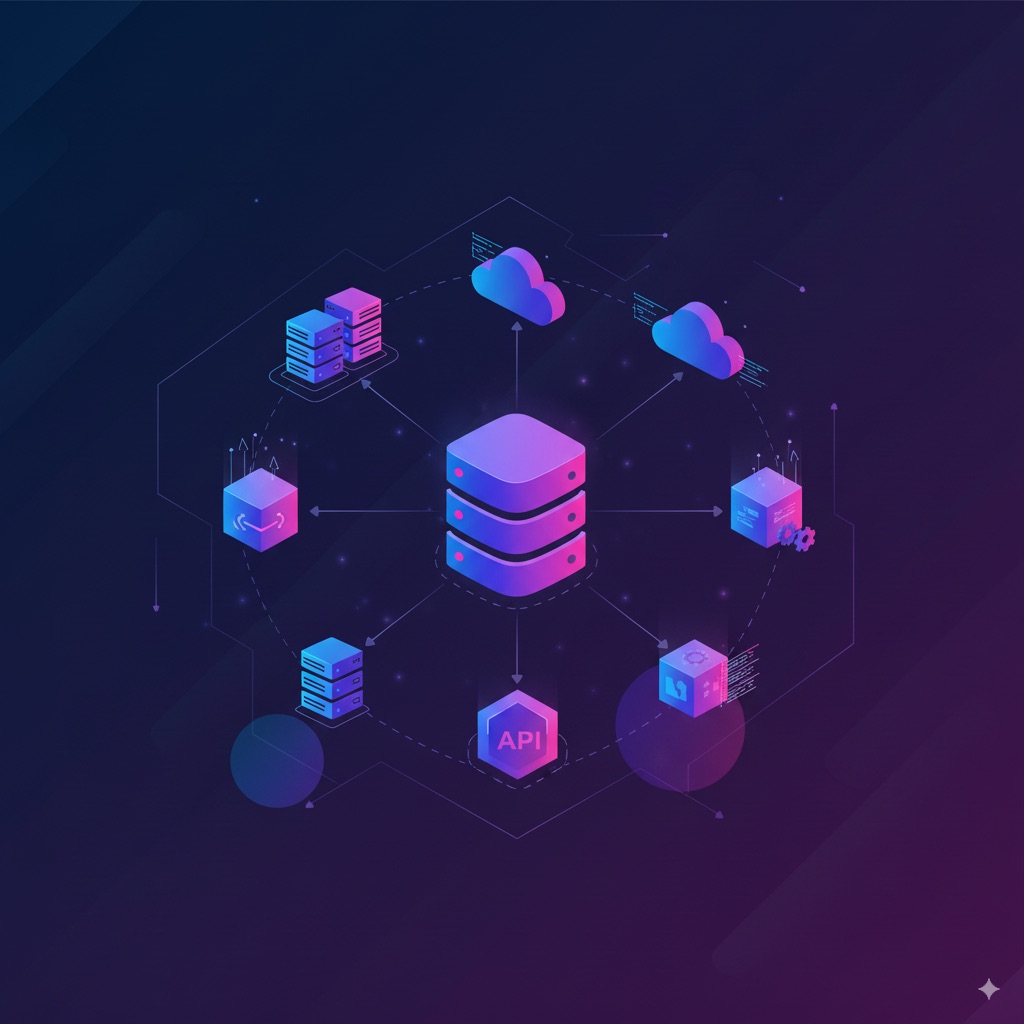Building Scalable Web Applications: A Comprehensive Guide
Scalability is one of the most critical aspects of modern web application development. As your user base grows, your application must be able to handle increased traffic, data volume, and feature complexity without compromising performance or user experience.
Understanding Scalability
Scalability refers to an application's ability to handle increased workload by adding resources to the system. There are two main types of scaling:
Vertical Scaling (Scale Up)
- Adding more power to existing machines
- Increasing CPU, RAM, or storage capacity
- Simpler to implement but has physical limitations
- Can become expensive and has a ceiling
Horizontal Scaling (Scale Out)
- Adding more machines to the resource pool
- Distributing load across multiple servers
- More complex but offers unlimited growth potential
- Cost-effective and provides redundancy
Architecture Patterns for Scalability
1. Microservices Architecture
Microservices break down applications into small, independent services that communicate over well-defined APIs.
Benefits:
- Independent Deployment: Services can be updated independently
- Technology Diversity: Different services can use different technologies
- Fault Isolation: Failure in one service doesn't bring down the entire system
- Team Autonomy: Different teams can work on different services
Implementation Considerations:
// Example: User Service API
const express = require('express');
const app = express();
app.get('/users/:id', async (req, res) => {
try {
const user = await userService.getById(req.params.id);
res.json(user);
} catch (error) {
res.status(500).json({ error: 'User service unavailable' });
}
});
app.listen(3001, () => {
console.log('User service running on port 3001');
});
2. Event-Driven Architecture
This pattern uses events to trigger and communicate between decoupled services.
Key Components:
- Event Producers: Generate events when something happens
- Event Consumers: React to events and perform actions
- Event Store: Persists events for replay and audit
Benefits:
- Loose coupling between components
- Improved scalability and resilience
- Better support for complex business workflows
3. CQRS (Command Query Responsibility Segregation)
CQRS separates read and write operations, allowing for optimized data models for each.
Implementation:
- Command Side: Handles create, update, delete operations
- Query Side: Handles read operations with optimized views
- Event Store: Maintains the source of truth
Database Scaling Strategies
1. Database Sharding
Sharding distributes data across multiple database instances based on a shard key.
-- Example: Sharding users by user_id
-- Shard 1: user_id % 3 = 0
-- Shard 2: user_id % 3 = 1
-- Shard 3: user_id % 3 = 2
SELECT * FROM users_shard_1 WHERE user_id % 3 = 0;
2. Read Replicas
Create read-only copies of your database to distribute read traffic.
Benefits:
- Reduced load on primary database
- Improved read performance
- Geographic distribution for global applications
3. Database Indexing
Proper indexing is crucial for query performance at scale.
-- Create composite index for common query patterns
CREATE INDEX idx_user_created_status
ON users (created_at, status)
WHERE status = 'active';
Caching Strategies
1. Application-Level Caching
Cache frequently accessed data in memory.
const Redis = require('redis');
const client = Redis.createClient();
async function getUser(userId) {
// Try cache first
const cached = await client.get(`user:${userId}`);
if (cached) {
return JSON.parse(cached);
}
// Fetch from database
const user = await database.getUser(userId);
// Cache for 1 hour
await client.setex(`user:${userId}`, 3600, JSON.stringify(user));
return user;
}
2. CDN (Content Delivery Network)
Distribute static assets globally for faster access.
Benefits:
- Reduced server load
- Faster content delivery
- Improved user experience globally
3. Database Query Caching
Cache expensive database queries to reduce database load.
Load Balancing
Distribute incoming requests across multiple servers to prevent any single server from becoming a bottleneck.
Types of Load Balancing:
- Round Robin: Requests distributed sequentially
- Least Connections: Route to server with fewest active connections
- IP Hash: Route based on client IP hash
- Weighted: Assign different weights to servers based on capacity
Performance Monitoring and Optimization
Key Metrics to Monitor:
- Response Time: How long requests take to complete
- Throughput: Number of requests handled per second
- Error Rate: Percentage of failed requests
- Resource Utilization: CPU, memory, and disk usage
Tools and Techniques:
- Application Performance Monitoring (APM) tools
- Database query analysis
- Load testing and stress testing
- Real User Monitoring (RUM)
Security Considerations
API Security:
- Implement rate limiting to prevent abuse
- Use authentication and authorization
- Validate and sanitize all inputs
- Implement proper error handling
Data Security:
- Encrypt sensitive data at rest and in transit
- Implement proper access controls
- Regular security audits and penetration testing
- Keep dependencies updated
DevOps and Deployment
Containerization with Docker
FROM node:16-alpine
WORKDIR /app
COPY package*.json ./
RUN npm ci --only=production
COPY . .
EXPOSE 3000
CMD ["npm", "start"]
Orchestration with Kubernetes
apiVersion: apps/v1
kind: Deployment
metadata:
name: web-app
spec:
replicas: 3
selector:
matchLabels:
app: web-app
template:
metadata:
labels:
app: web-app
spec:
containers:
- name: web-app
image: myapp:latest
ports:
- containerPort: 3000
Best Practices Summary
- Design for Failure: Assume components will fail and build resilience
- Stateless Services: Keep services stateless for easier scaling
- Asynchronous Processing: Use queues for time-consuming operations
- Database Optimization: Proper indexing and query optimization
- Caching Strategy: Implement multi-level caching
- Monitoring: Comprehensive monitoring and alerting
- Testing: Load testing and performance testing
- Documentation: Maintain clear architecture documentation
Conclusion
Building scalable web applications requires careful planning, the right architecture patterns, and continuous optimization. Start with a solid foundation, monitor performance metrics, and scale incrementally based on actual usage patterns.
Remember that premature optimization can be counterproductive. Focus on building a maintainable system first, then optimize based on real performance data and user feedback.
At AtlasProds, we specialize in building scalable web applications that grow with your business. Our experienced team can help you design and implement the right architecture for your specific needs.
